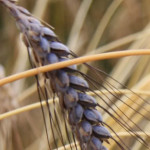
Heritage Grain Trust

.
.
.
.
- Field Crops
- Tubers, Seeds, Bulbs, Corms and Cuttings
- Heritage Grains
- Heritage Varieties
- Organic
- Vegetable Seeds
 PAGE Q.R. CODE PAGE Q.R. CODE |
||||
|
CONTACT DETAILS
Email https://www.heritagegraintrust.org/contact
|
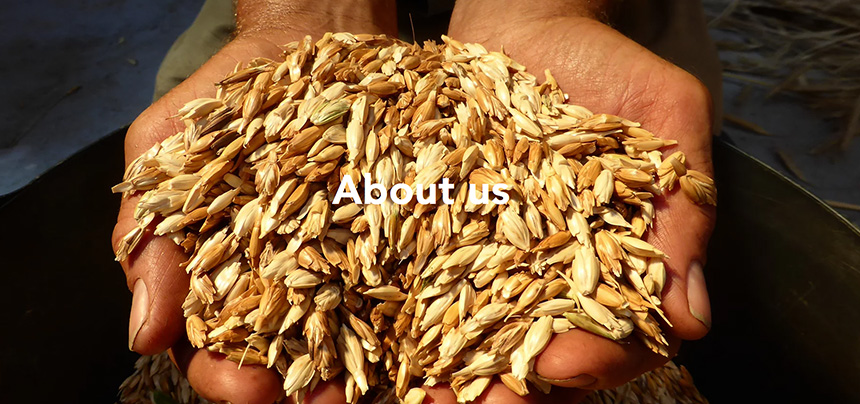 |
||
| . | ||
|
Our mission The Heritage Grain Trust (HGT) is a not-for-profit organisation formed to encourage the production and use of heritage grains. The HGT has been formed with the aim of developing a new approach to growing grain for human consumption, one that encourages resilience in the face of climate change and reduces the loss of biodiversity that occurs with intensive grain production. We believe that a genuine grain revolution is required in arable farming based on the growing of genetically-diverse populations of heritage cereals using agro-ecological methods. We believe that British farmers can produce all the grain needed to feed the UK by growing heritage grains in ways that improve soil health, increase biodiversity, and sequester climate-destroying greenhouse gasses. We will work to achieve this change by supporting educational programmes that encourage the production and use of heritage grain using low input production methods such as undersowing cereals with nitrogen-fixing clover, direct drilling and Continuous Organic Grain Cropping (COGC). We will work with partners who share our goals, and help support the development of a heritage grain network that links local producers and consumers, and brings heritage grain products to everyone regardless of income. |
||
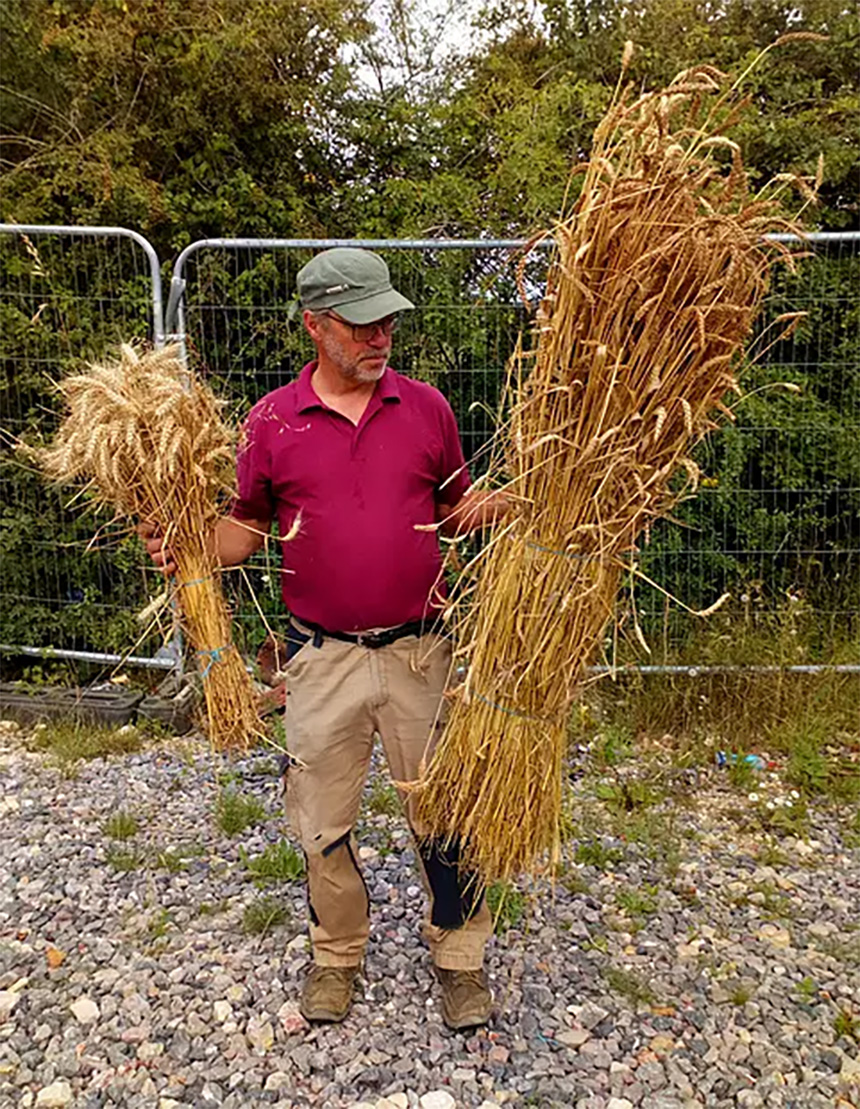 |
||
| . | ||
|
What are heritage grains? Heritage grains are varieties of wheat, rye, barley and oats that were grown before the introduction of intensive, scientific plant breeding in the early 1900s. Our ancestors grew genetically-diverse ‘landrace’ crops that were adapted to poor soils and difficult growing conditions. These crops were much more resilient, reliable and adaptable than modern varieties, and had large root systems that allowed them to draw moisture and nutrients from deep below the soil surface. Wheat rarely cross-pollinates, and traditional landraces were complex mixtures of pure-breeding lines that were well-adapted to local growing conditions. Seed was resown from the previous year’s harvest which ensured crops were always in the process of adapting to local growing conditions and longer term climate change. |
||
| . | ||
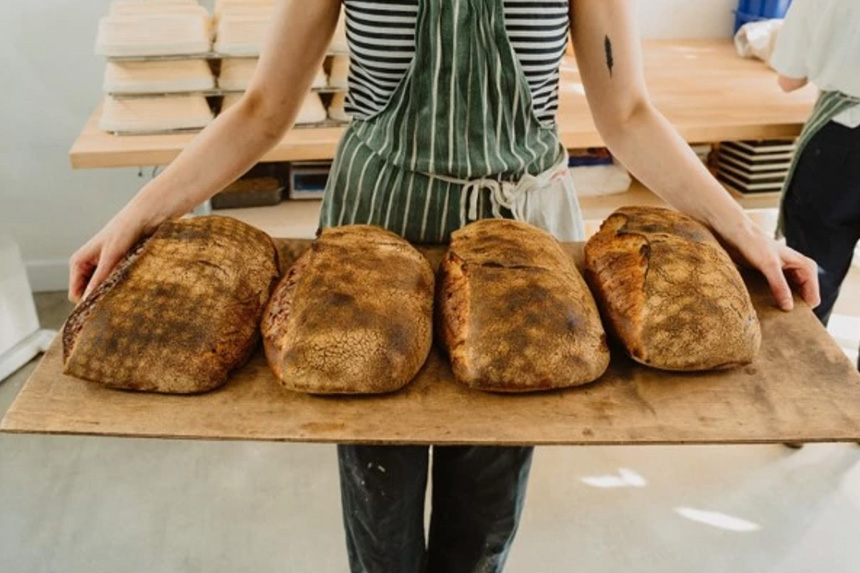 |
||
| . | ||
|
Some growers and bakers use the term ‘heritage’ to refer to cereal varieties that were grown before the introduction of dwarf ‘Green Revolution’ wheat varieties in the 1960s , which triggered a massive expansion of industrial, agrichemical-fuelled grain production in developing countries around the world. This caused a further decline in crop genetic diversity, accentuated the already catastrophic collapse of biodiversity in farmers’ fields in the UK and abroad, and massively increased the carbon footprint of flour and bread. We believe the terms ‘heritage’ and ‘diversity’ are linked historically and genetically, and that the introduction of hybridisation and pure line selection methods in the early 1900s provides the most logical date for discriminating between traditional heritage varieties (which may be genetically diverse), and modern hybrid varieties (which, because of how they are created, are always genetically uniform). The first commercially successful ‘Green Revolution’ dwarf wheat was introduced to the UK in the early 1980s. Where to buy Flour and Products Shipton MillGilchesters OrganicsThe Oxford Artisan Distillery |
||
| . | ||
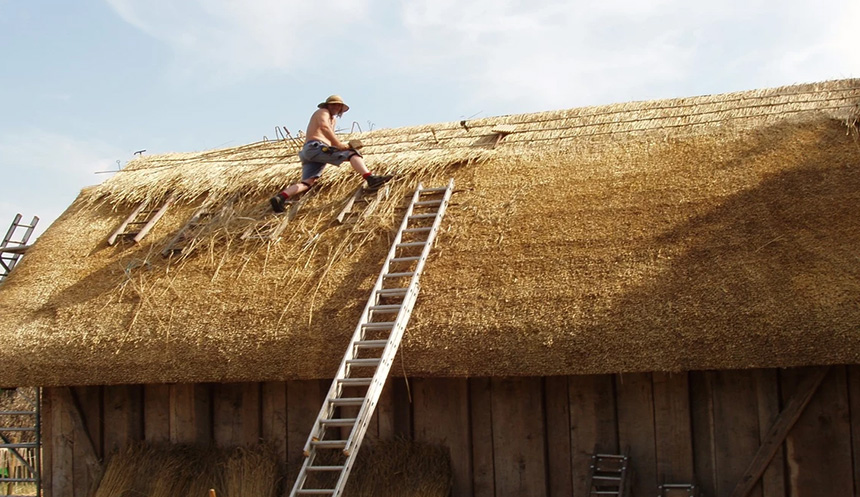 |
||
| . | ||
| An Article for information | ||
Heritage grains: Climate resilient cropsby Heritage Grain Trust on in Farming, Food and Culture, Food SystemsAnd for that minute a blackbird sang Close by, and round him, mistier, Farther and farther, all the birds Of Oxfordshire and Gloucestershire. So recalled the war poet Edward Thomas when stopping at Adlestrop Station in 1914 – ‘No one left and no one came’. A century on, the railway station is gone, and those famous birds of rural England have plummeted in numbers. We have few options to halt the collapse of British wildlife. One option, which is gaining ground, is to ‘rewild’ large tracts of Britain, building on the successes of the Knepp Estate in Sussex. But this leaves farmers at a crossroads where one sign points ‘Neglect’ and the other ‘Carry On’ – an unsatisfactory set of options for the environmentally-conscious farmer. Another alternative, tried, tested and heavily criticised, is to farm organically. The greatest criticism levelled against organic farming is that, due to lower yields, we can’t feed the world organically. Typically speaking, organic farmers are very good at producing animal products. The difficulty comes in producing cereal crops for human consumption, where the modern varieties used, bred for chemical inputs, give lower yields and protein in organic systems. To get a wheat crop good enough for commercial bread flour every four years in a rotation, would be good going. For most of the rotation, the field is in a fertility building ley which is also mown or grazed. While such a system can meet our need for high quality animal products, it is unable to provide the quantity of grain needed for human consumption: the balance is simply too skewed to the animal side to give us the other food we need. However, an alternative to such a trap exists. In recent years on farms around the country, there has been a steady increase in the growing of ‘heritage’ grains – varieties of wheat, barley and rye which existed before hybrids were first created in the early 20th century. Over the past 20 years, inspired by the principles initially set out in Masanobu Fukuoka’s The One-Straw Revolution, organic farmer John Letts has developed a continuous cropping system using heritage grains that has yielded some remarkable results. First, a crop of about 1.2 tonnes an acre of wheat, barley or rye is produced every year without yields declining – this is a result of only taking the grain from the field and by maintaining a species rich understorey of nitrogen-fixing white clover. Seed is drilled or broadcast into the standing stubble and germinates under a protective mulch of straw after the stubble is mown. While 1.2 tonnes does not seem a large quantity, the flour is of very high quality, and because the same field can produce a crop year after year, on a whole farm system this represents a threefold increase in grain production for human consumption compared to standard rotational organic approaches. With such a method the argument that organic farming cannot feed the world falls apart: organic farming can provide high quality meat, dairy and flour needs. Naturally such an argument requires feeding much less of our arable produce to animals – a position we fully endorse. To feed the world, we need a reliable harvest. And yet, conventional grain crops in Britain have seen yields fall by 35-40% this season. Only two years ago, in the summer drought of 2018, harvests were also below average. This year, by contrast, farmers growing John’s heritage grains have had a bumper harvest. If unpredictable weather and extreme events continue to increase, as they are forecast to do, the wildly fluctuating yields we have seen will pose a real threat to our food security. Building climate resilience into our food production is essential, and it is here that the great genetic diversity of our populations of heritage grains comes to the fore. With each variety different from another, the whole field is able to respond as best as possible to the weather as it finds it. Our observations on two varieties illustrate this: where Orange Devon Blue Rough Chaff is remarkably adapted to drought, so was the original Hen Gymro adapted to the cold, wet conditions of the Welsh uplands. As a result, a population comprising hundreds of heritage varieties is remarkably resilient to challenging conditions, producing a reliable and high quality yield every year. Innovative and ecologically minded farmers around the country are recognising the growing market for heritage grains among artisan and home bakers, which is a promising sign for the future of the countryside. As enthusiasm for heritage grain farming continues to grow, the challenge over the next few years will be to maintain the integrity and the diversity essential for resilience in heritage grain crops. To that end, after considerable planning, the Heritage Grain Trust has now been launched. The Trust will provide education, advice and research for the heritage grain movement in Britain. The Heritage Grain Trust’s website sets out these ambitions in more detail. Instead of despairing about the future of the countryside, now is the time to seize the chance to work for its recovery – we believe that heritage grains can play a crucial part in that recovery. There is a role for each of us to play, whether as consumers, bakers, growers or policymakers, to see that vision triumph. And that, surely, is a cause for joy. This article was written by Hugh Campbell, John Letts and Marina Chang from the Heritage Grain Trust. They can be contacted at info@heritageharvest.co.uk. |
||
